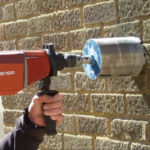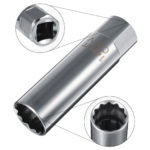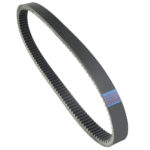Mikuni Pilot Jet Drill Size Chart
It can be a really difficult task when you want to decide what’s the correct main jet to buy when you want to tune your carburetor. Why buy a bunch of different main jets if you never use them again? This can happen if you don’t know what size will be the best starting point for your desired combination or when you buy main jets based on a guess.
You can narrow down what’s the ideal jet size your carburetor needs by drilling out the original jet to the more fitting size.
To start the process of drilling out your main jet you first need to take a plug reading. With the main jet still intact, run your engine and take a plug reading. If the reading is on the lean side then you will need to drill out the jet with a drill bit the next size larger. Run the engine with the drilled-out jet and take a plug reading again. You should repeat this process until you get a good plug reading. It’s of utmost importance that you do not skip a drill bit size when drilling out your main jet because once you have drilled it to big then there is no turning back to
Once you get a good plug reading you can use the table below to determine the exact new jet size. For example, if the drill bit measures 1.06mm then your new jet size will be a 106 jet.
Mikuni Pilot Jet Drill Size Table
[ninja_tables id=”4530″]
The table above gives an indication of the original jet size and the new jet size after it has been drilled out. The new jet size can be calculated only if you know the exact size of the drill bit you used to drill out the jet.
What is a Mikuni Pilot Jet and Why is it Important?
A Mikuni pilot jet is a small brass gizmo in your carburetor that helps control how much gas is mixed with air when your engine is running slow. You know when your engine is idling or just starting up? That’s when the pilot jet is doing its job. It’s got a little hole in the middle that lets gas flow through, and the size of that hole determines how much fuel gets mixed with the air.
Now, why is the pilot jet important? Well, it’s basically responsible for making sure your engine runs smoothly and responds well when you hit the throttle at low speeds. If your pilot jet is too rich, your engine might run crummy and your spark plugs could get messed up. On the other hand, if it’s too lean, your engine could overheat, backfire, or even stall. So, picking the right pilot jet size for your particular engine and riding conditions is a must.
That’s where the Mikuni Pilot Jet Drill Size Chart comes in handy. With this chart, you can figure out the right drill size to use when you’re replacing your pilot jet. It’s a simple process, but it can make a big difference in how well your engine performs. So, take the time to get it right, and your engine will thank you!
Tips for Drilling Out a Pilot Jet and Installing a New One
Here are some tips for drilling out a pilot jet and installing a new one:
- Use the Mikuni Pilot Jet Drill Size Chart to determine the correct size for your carburetor. Be sure to check the chart carefully and use the appropriate drill bit size.
- Remove the carburetor from the engine to access the pilot jet. This will make it easier to work on and prevent debris from getting inside the engine.
- Carefully remove the existing pilot jet with a screwdriver or needle-nose pliers. Be gentle and avoid damaging the threads on the carburetor body.
- Insert the appropriate size drill bit into a drill press or hand-held drill. Drill out the pilot jet to the correct size, being careful not to go too deep or damage the carburetor body.
- Clean out any debris from the pilot jet and carburetor body using compressed air or carburetor cleaner.
- Install the new pilot jet by threading it into the carburetor body. Be sure to tighten it securely, but do not over-tighten as this could damage the threads.
- Reinstall the carburetor onto the engine and adjust the pilot screw to the recommended settings for your particular carburetor.
- Start the engine and test the pilot jet by running the engine at low speeds. Adjust the pilot screw as needed to achieve optimal performance.
- Double-check your work and ensure that everything is securely tightened and functioning properly before riding your motorcycle or ATV.
By following these tips, you can safely and effectively drill out and install a new pilot jet in your Mikuni carburetor, helping to improve engine performance and throttle response at low speeds.




